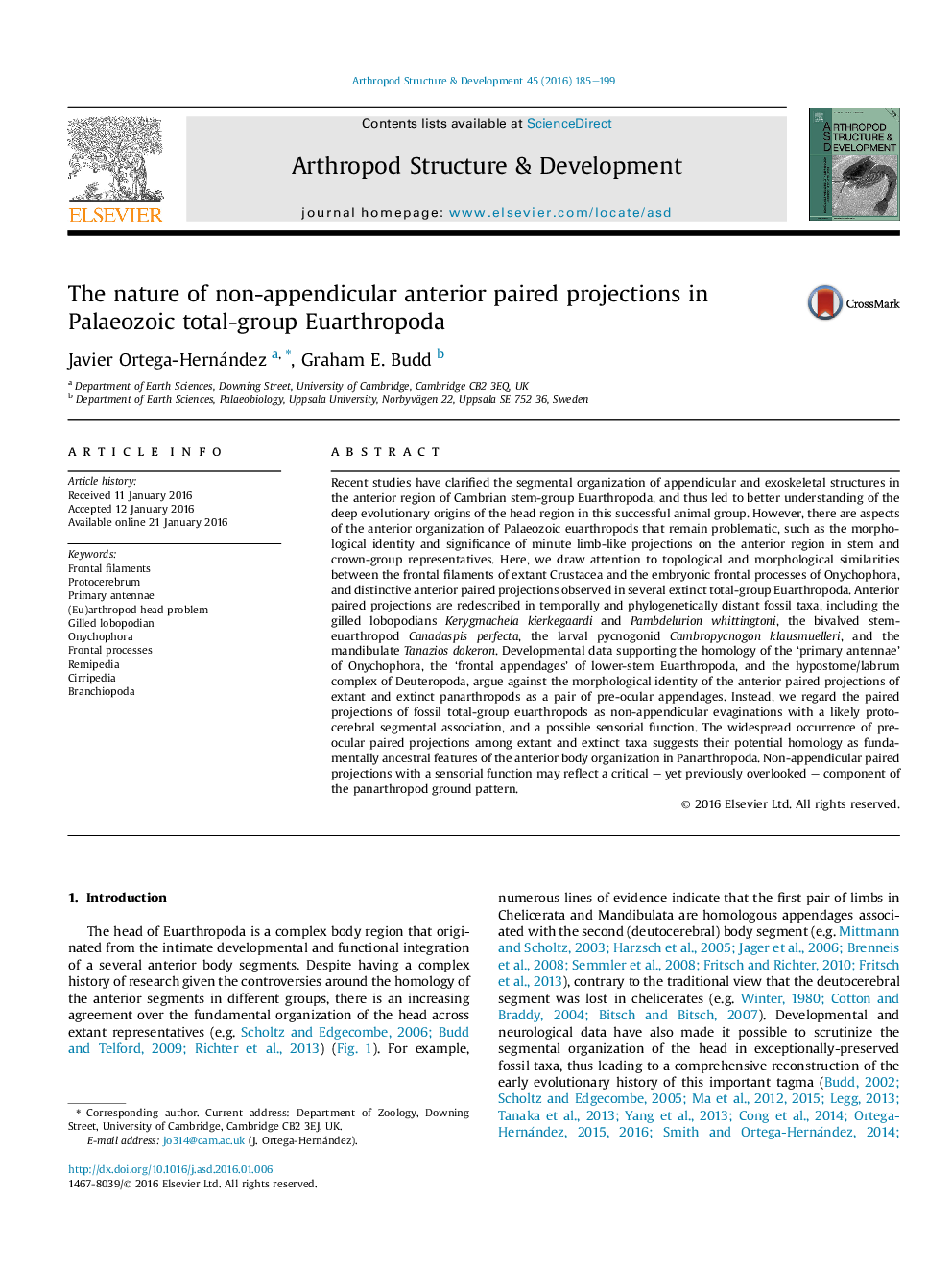| Article ID | Journal | Published Year | Pages | File Type |
|---|---|---|---|---|
| 2778496 | Arthropod Structure & Development | 2016 | 15 Pages |
•The morphology, and function of anterior paired projections of various extinct total-group Euarthropoda are revised.•Paired projections represent protocerebral non-appendicular cuticular evaginations with a possible sensorial function.•Paired projections of fossil taxa show similarities with crustacean frontal filaments and onychophoran frontal processes.•Paired projections occur in phylogenetically distant Panarthropoda, and may reflect the ground pattern of this clade.•Euarthropod paired projections are not pre-ocular limbs, and thus are not homologous with onychophoran primary antennae.
Recent studies have clarified the segmental organization of appendicular and exoskeletal structures in the anterior region of Cambrian stem-group Euarthropoda, and thus led to better understanding of the deep evolutionary origins of the head region in this successful animal group. However, there are aspects of the anterior organization of Palaeozoic euarthropods that remain problematic, such as the morphological identity and significance of minute limb-like projections on the anterior region in stem and crown-group representatives. Here, we draw attention to topological and morphological similarities between the frontal filaments of extant Crustacea and the embryonic frontal processes of Onychophora, and distinctive anterior paired projections observed in several extinct total-group Euarthropoda. Anterior paired projections are redescribed in temporally and phylogenetically distant fossil taxa, including the gilled lobopodians Kerygmachela kierkegaardi and Pambdelurion whittingtoni, the bivalved stem-euarthropod Canadaspis perfecta, the larval pycnogonid Cambropycnogon klausmuelleri, and the mandibulate Tanazios dokeron. Developmental data supporting the homology of the ‘primary antennae’ of Onychophora, the ‘frontal appendages’ of lower-stem Euarthropoda, and the hypostome/labrum complex of Deuteropoda, argue against the morphological identity of the anterior paired projections of extant and extinct panarthropods as a pair of pre-ocular appendages. Instead, we regard the paired projections of fossil total-group euarthropods as non-appendicular evaginations with a likely protocerebral segmental association, and a possible sensorial function. The widespread occurrence of pre-ocular paired projections among extant and extinct taxa suggests their potential homology as fundamentally ancestral features of the anterior body organization in Panarthropoda. Non-appendicular paired projections with a sensorial function may reflect a critical – yet previously overlooked – component of the panarthropod ground pattern.
